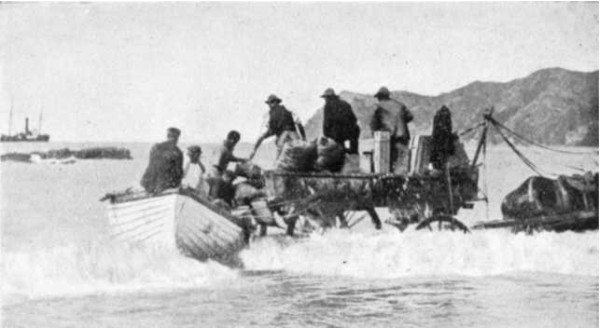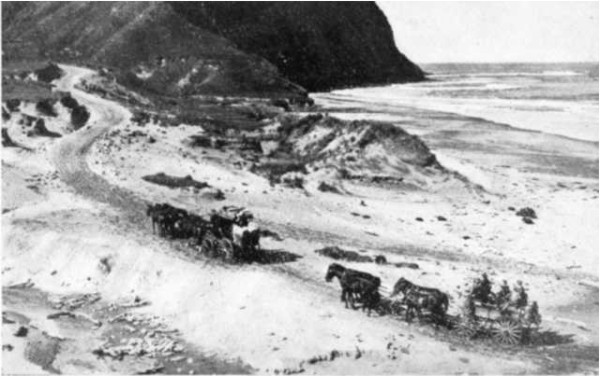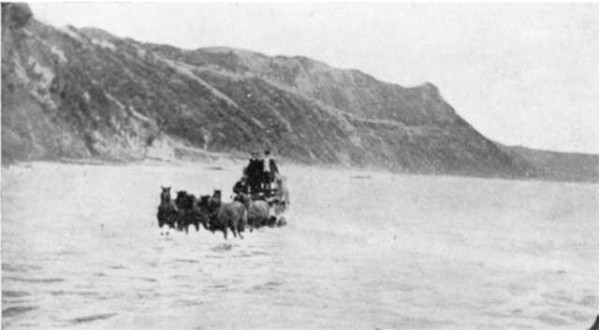This article updates information on the National Government’s highly controversial 2011 Marine and Coastal Area (MACA) Act, that allows Maori tribal privatisation of the foreshore and seabed, through gaining Customary Marine Title (CMT) over these priceless resources. The Act is the brainchild of pro-Maori Treaty Claims Minister Christopher Finlayson.
It is now more than four years since this Act came into force. Over forty highly optimistic and large claims have been lodged by tribal groups, generally in areas with highly productive fisheries e.g. along the eastern coasts of the North Island from Wairarapa to Cape Reinga.
But no CMT titles have yet been awarded. However, now that the National Government has been returned with 59 MPs in the 121 seat Parliament, and a comfortable majority assured on this issue by the two Maori Party MPs, Finlayson can now push claims through without hindrance.
This is regardless of whether the Claims meet the specific conditions required by the Act. As a consequence, the Office of Treaty Settlements (OTS), which manages MACA claims, is now scuttling around the country encouraging tribal claimant groups to lodge claims before the April 2017 expiry date.
Finlayson is also the Attorney General, whose role it is to uphold the public interest. Yet he is assaulting the public interest, and public resources, by driving these highly questionable claims for his mates in the tribal elite. This is another example of conflict of interest by this deeply conflicted Minister.
The MACA Act states that, for a CMT to exist in a specified area of the foreshore and seabed, the claimant tribal group must hold the specified area in accordance with tikanga (Maori custom) and that it “has exclusively used and occupied it from 1840 to the present day, without substantial interruption.”
Any group gaining CMT also has the right to declare wahi tapu areas, over part or all of its CMT. Wahi tapu areas allow the tribal group to exclude the public, including part-Maori that are not part of their tribal group, and to enforce trespass charges of up to $5,000 when a person trespasses on these formerly publicly owned areas. The tribal group’s members can fish in the area, and their rights will even be enforced by Government Fisheries inspectors keeping the public out. It also allows good surf breaks to be privatised, with the right to charge others to use them.
Wahi tapu are the equivalent of a free hit against the public, as it is unlikely that a claimant’s claim could be contradicted. Motorways have had to deviate around taniwha (Maori mythical water monster) lairs. No foreshore and seabed wahi tapu exist at present. So new ones will be over formerly public access areas that the public will then be locked out of.
Other significant tribal property rights awarded by Finlayson’s Act are:
- Veto rights on any RMA resource consent structures e.g. boat launching areas, boatsheds or other buildings over the foreshore, marinas, moorings, wharves, aquaculture facilities, etc, on their renewal. Veto rights give the tribal group the right to charge non-negotiable fees and mean they can require the activity/facility to be removed at the owner’s expense.
- Ownership of all non-Crown mineralsg. iron-sands, gravel, etc, and payment to the tribe of royalties
- Without any consultation with the local community, tribal groups can make their own planning document, which can direct the Director General of Conservation, the Ministry of Fisheries where it sets or varies fish species sustainability measures e.g. decreasing the recreational catch, and regional councils in regional coastal plans.
There are seven other exclusive rights, giving direct financial gain to the tribe, highlighting the race-based rights of this Act. They are all incentives to maximise the tribe’s CMT Area, at the expense of all other New Zealanders’ rights, including those of other tribal groups.
Under the Treaty of Waitangi, New Zealand became a British Colony in 1840, subject as such, to British laws. These included banning the Maori customs of slavery, cannibalism, and inter-tribal fighting. Under British law too, the foreshore and seabed are owned by the Crown, and managed as a public common, for the benefit of all citizens.
However, the National Party’s election in 2008 led to Finlayson repealing the legislation, guaranteeing Crown ownership of the public foreshore and seabed, and replacing it with his MACA Act, with its excessive tribal property rights to any CMT area that is granted, and its similarity to South African Apartheid, but aimed at non-Maori.
It is difficult for tribal groups to qualify for CMT
From 1840 to the mid-1930s, most travel was by sailing ship or steamship, around the coast, and, where safe harbours did not exist, goods were transferred by dinghy to wagons in the surf. (e.g. Photo 1 below)
Photo 1: Landing passengers and cargo from coastal steamship, Waipiro Bay, East Coast 1890s, F R Hargreaves; Source: NZ Electronic Text Collection VUW Library.
Inland roads existed in some places. But lack of tar-sealing meant they were difficult of access in many regions in winter, as well as not being as direct as using the beaches. On the East Coast of the North Island, for instance travellers used the beaches, many of which were surveyed public roads, that are still there today for public use. In places they go over headlands up to 500 metres high. Those who drove and rode in the stagecoaches were tough indeed. (Photos 2 and 3 below)
From 1935 onward, with the advent of bulldozers, inland roads became much more readily maintained. After the end of World War Two, the rapid increase in both car ownership and roads to beaches, meant New Zealanders could go to their favourite beach, and camp nearby, whenever they wanted to, and even buy baches, and retire there. This has been happening now for the last 70 years. There are very few coastal areas where holidaying New Zealanders cannot go.
Photo 2: Royal Mail Coaches en route from Gisborne to Tolaga Bay, 1890’s; Source: NZ Electronic Text Collection VUW Library, Author Joseph Angus Mackay.
Photo 3: At sea. Off Tapuae Rocks. Treacherous section of old Gisborne-Tolaga Bay Coach Road; Source: NZ Electronic Text Collection VUW Library, Author Joseph Angus Mackay.
The massive increase in private recreational motorboats, sailing yachts etc. also means that all beaches and coasts can now be readily landed on and fished, surfed, scuba-dived, water-skied etc. by the public, as of right. Hence there are now very few, if any, areas that have been exclusively used and occupied by tribal groups.
To work around the likelihood that most claims do not meet the Act’s requirements for CMT, Mr Finlayson is choosing people that hold similar views to himself as “non-binding Claim assessors” They will meet with the claimants to assess their claims. But not meet people like myself, who say that they don’t qualify.
Based on his past history, Finlayson is a genius at choosing people who will come up with the conclusions that he seeks. No doubt he expects these “assessors” will help him pass the Acts of Parliament that he needs to give CMT to many of the claimants.
National Party voters need to step up!
Another fallacy that I hear often is that the National Party will not let such a Maori apartheid system happen. Yet Prime Minister John Key allows Chris Finlayson to do whatever he wants to. Remember that Key supported Finlayson in passing the MACA Act. It was Labour and New Zealand First that opposed Maori Apartheid on our beaches in 2004.
Take also the Tuhoe Treaty Claim to Urewera National Park. Key said initially that the Urewera National Park would not be returned. The next thing the Park was returned to Tuhoe to manage lock, stock and barrel. Why? Because Key is besotted by the Iwi Leaders’ Group, which he meets with regularly, and generally does whatever they want him to do.
However, voters who usually vote National can play an important role in stopping Maori Apartheid on our beaches. They need to engage their National MPs throughout the country, and point out that Finlayson and Key’s racist policies are unacceptable in a 21st Century democracy of equal citizens. It would be great if National MPs would show some guts and vote against Finlayson’s trumped up coastal claims that he needs to push through Parliament in the next three years. They also need to support other political parties that oppose National’s Maori Apartheid policies, as it is difficult to see National changing.
Nothing less than the future of New Zealand as a democratic nation hangs in the balance.




